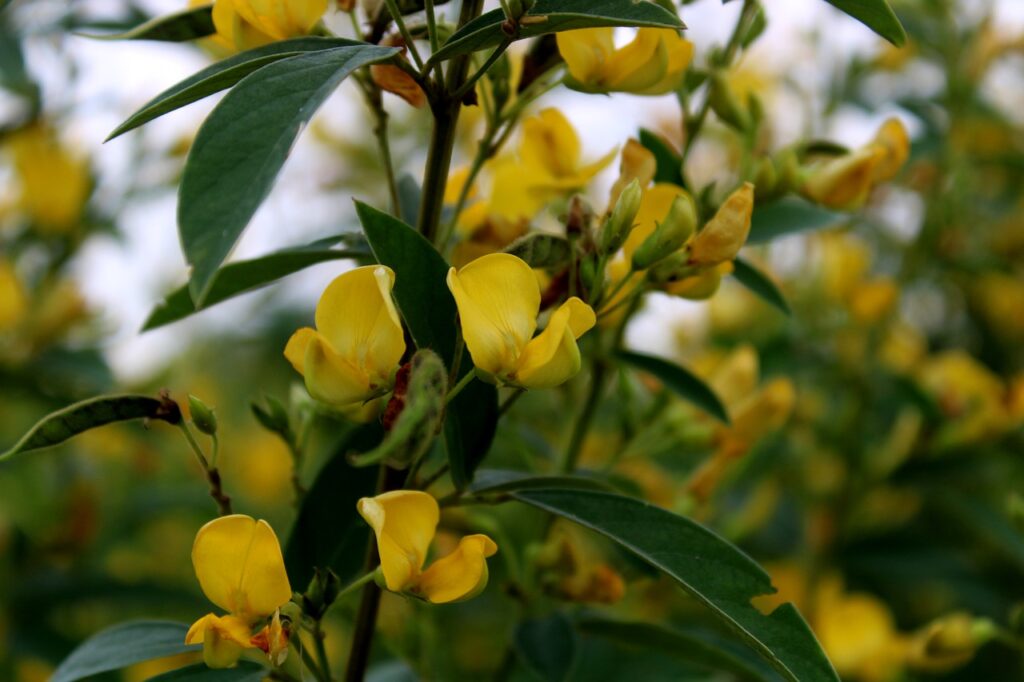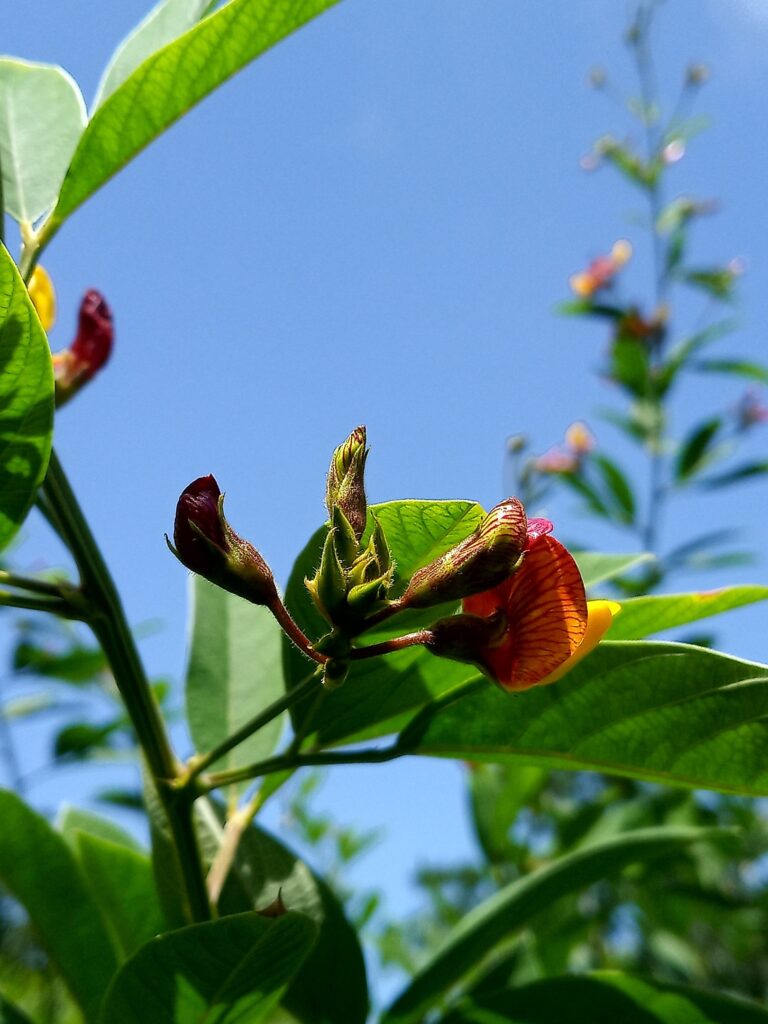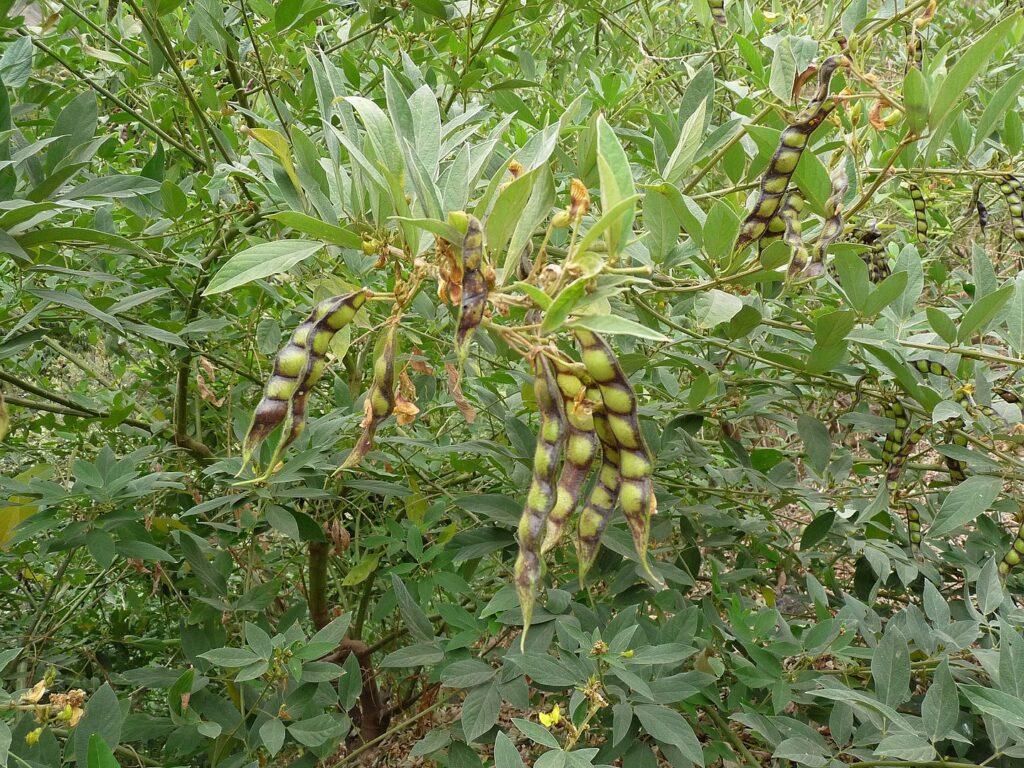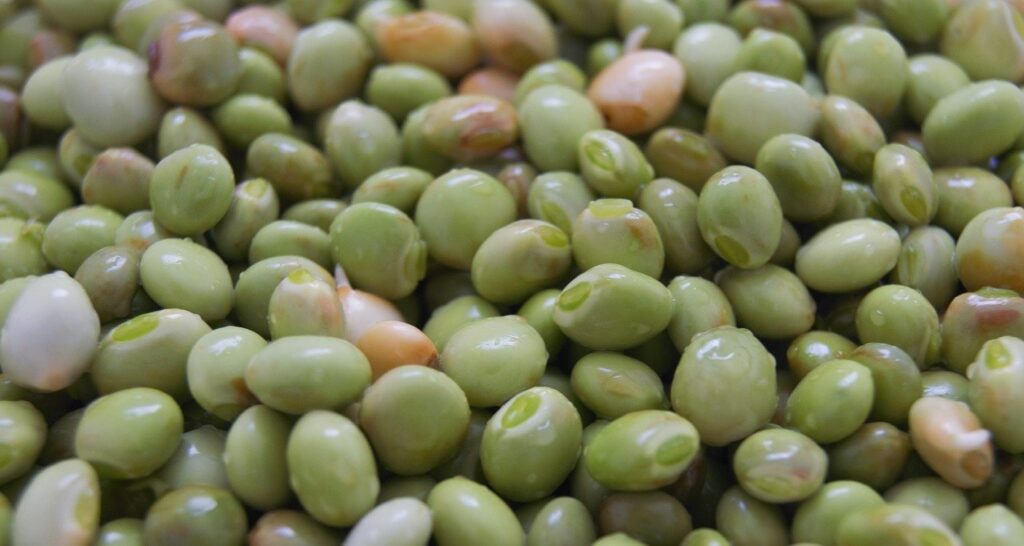Pigeon peas, gandules, gunjo pea, tropical green pea

Pigeon peas, also known as gandules or Cajanus cajun, are a short-lived perennial legume that thrives in the tropics and subtropics. Cajanus cajun originated in India but is a popular favorite in Caribbean cuisine as well.
Pigeon peas, or Cajanus cajun, are a beautiful, fragranced addition to any Southern garden. These lovely bushes are short-lived perennials in zones 9 through 11, and flourish in hot, humid climates, like we enjoy around the Gulf Coast.
Pigeon Pea Description
Cajanus cajun can live up to five years in the absence of a hard frost and is hardy in zones 9 through 15. It can grow up to 12 feet high over the spring and summer, providing shade to understory plantings.
Because of the many pigeon peas benefits and uses, permaculture advocates grow it as a staple crop in the tropics and subtropics.
You can eat the peas green or allow them to to dry on the plant for storage. The dried beans feature a warm nuttiness with a hint of umami not provided by other dry beans. The dried peas are an excellent source of protein, providing 44 grams of protein per 1-cup serving.
Pigeon peas bloom in early spring and late fall and will produce a regular harvest between November and April.
You can cut them back in May to control height.
Pigeon Pea Plant Benefits
Pigeon pea is a beautiful plant with a dense, bushy habit that can be used as an ornamental shrub. The plant’s size can vary depending on the cultivar and growing conditions, but it can grow up to 4 meters tall. I usually find that they grow about 8 feet tall in zone 10a without irrigation.
The leaves of the pigeon pea plant are a medium green color and have a pinnate shape with 3-5 leaflets. The flowers are bright yellow to orange and are arranged in clusters at the tips of the branches. The fruit is a pod that is about 5-10 cm long and contains 2-9 seeds.
Pigeon pea belongs to the Fabaceae family and is native to tropical Africa. It’s widely cultivated in tropical and subtropical regions worldwide. The plant grows up to 4 meters tall and has a dense, bushy habit. The leaves are pinnate with 3-5 leaflets and are a medium green color. The flowers are yellow to orange and are arranged in clusters at the tips of the branches. The fruit is a pod that contains 2-9 seeds, which are commonly used for food.
Pigeon pea is an important crop plant that is widely grown for its edible seeds. The seeds are rich in protein, carbohydrates, and fiber, and are an excellent source of vitamins and minerals. They are used in a variety of culinary dishes, including soups, stews, curries, and salads. In some cultures, the seeds are roasted and ground into flour, which is used to make bread and other baked goods.

Benefits of Pigeon Pea in the Garden
In addition to its culinary uses, pigeon pea has several other benefits. The plant is a nitrogen fixer, meaning it can take nitrogen from the air and convert it into a form that can be used by plants. This makes it an excellent cover crop that can help improve soil fertility.
Because of its high nitrogen content, pigeon pea leaves provide a boost to compost piles too.
Pigeon pea leaves and stems of the plant can also be used as animal feed, and the plant is sometimes used in traditional medicine to treat a variety of ailments.
Pigeon Pea Leaf Benefits
In some areas of the world, the benefits of pigeon pea are medicinal. In the Philippines and Malaysia, the plant is used for abdominal pain and diarrhea. In India, the leaves are used topically to treat skin sores and rashes.

Pigeon Pea Recipes
When it comes to cooking pigeon pea, there are many delicious ways to prepare it. You can boil, roast, or pressure-cook pigeon peas in a variety of dishes.
In Indian cuisine, cooks use pigeon peas to make dals and curries, while in Latin American cuisine, they add it to pigeon pea stew or pigeon pea soup.
The most popular recipes combine pigeon peas and rice. A savory version from Jamaica features pigeon peas and rice with coconut milk.
In Puerto Rico, Arroz Con Gandules is a recipe with pigeon peas, combining them with rice, tomatoes, and spices.
You can also grind the seeds into flour for baking. Overall, pigeon pea is a versatile and nutritious food that is enjoyed by people all over the world.
Pigeon Pea Nutrition
According to the USDA, pigeon peas are full of protein but contain almost no fat despite their nutty deliciousness.
One cup of cooked pigeon peas has:
- 203 Calories
- 0.6 grams Total Fat 0.6
- 0.1 grams Saturated Fat
- 11 grams of Protein
- 39 grams of Total Carbohydrate
- 11 grams of Dietary fiber
- 0 mg of Cholesterol
- 8 mg of Sodium
- 645 mg of Potassium

Growing Pigeon Pea Seed
Pigeon pea seeds are easy to grow in hot and humid climates. You may also want to try them in hot arid climates if you’re willing to irrigate them regularly.
With the right care and management, pigeon pea can be a productive and valuable crop.
Purchase Pigeon Pea Seeds
| Species Name: | Cajanus cajun |
| Common name(s): | Pigeon peas, gandules, gunjo pea |
| Defining Characteristics: | Fast-growing shrubs up to 12 feet tall with bright yellow flowers |
| Temperature requirement: | Tropical plant, hardy in zones 9 to 15 |
| Watering frequency: | Water daily until germination occurs and plant is established then provide water weekly |
| Lighting: | Full sun to partial shade |
| Soil type: | Tolerant of poor soils |
| Growth rate: | Fast growth rate depending on conditions. |
| Height: | From 6 to 12 feet tall |
| Origin: | India |
| USDA Hardiness Zone: | 9 to 11 |
| Additional Notes: | Plant any time of year in frost-free zones. Add compost and mulch yearly to improve production |
